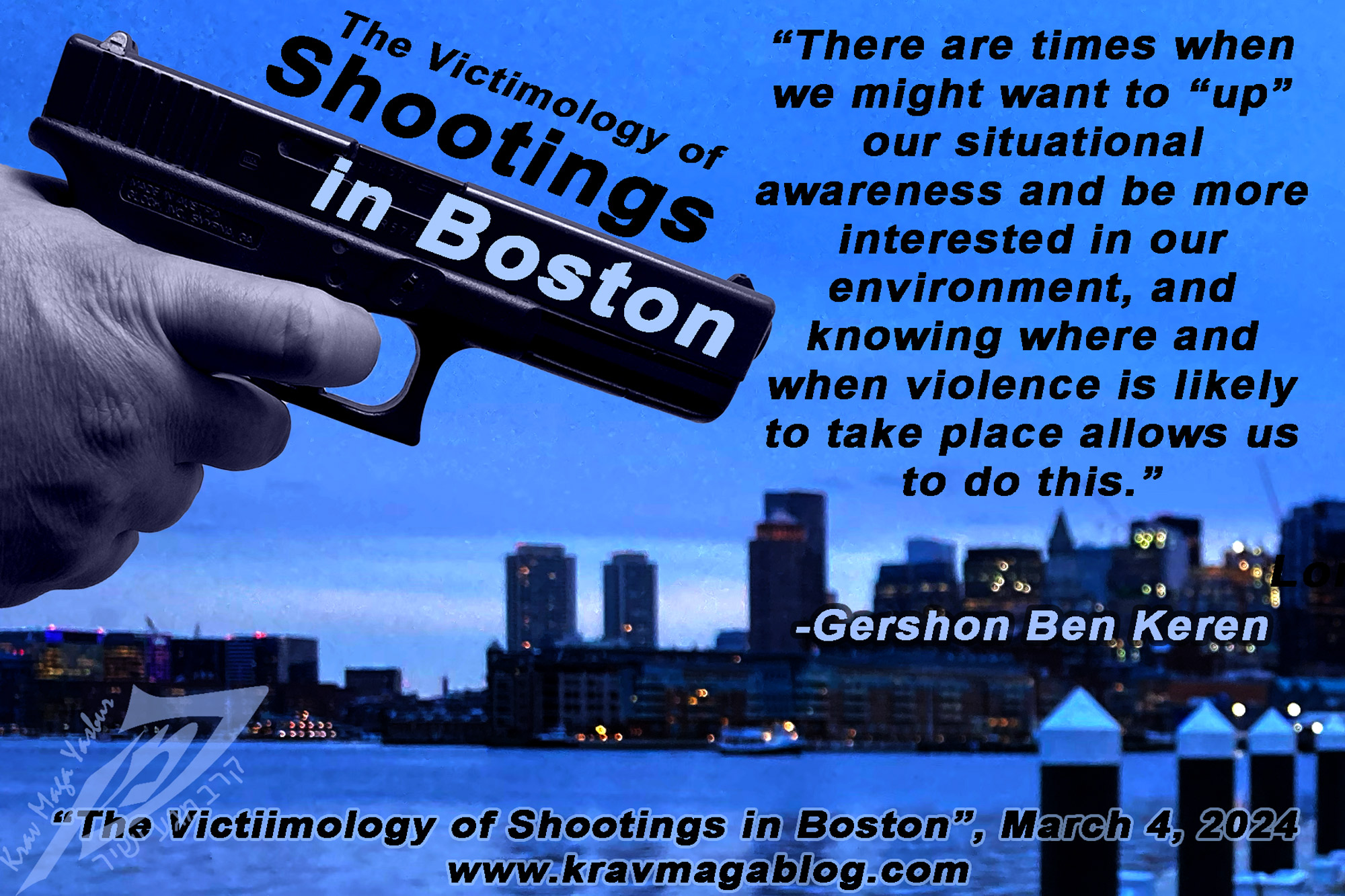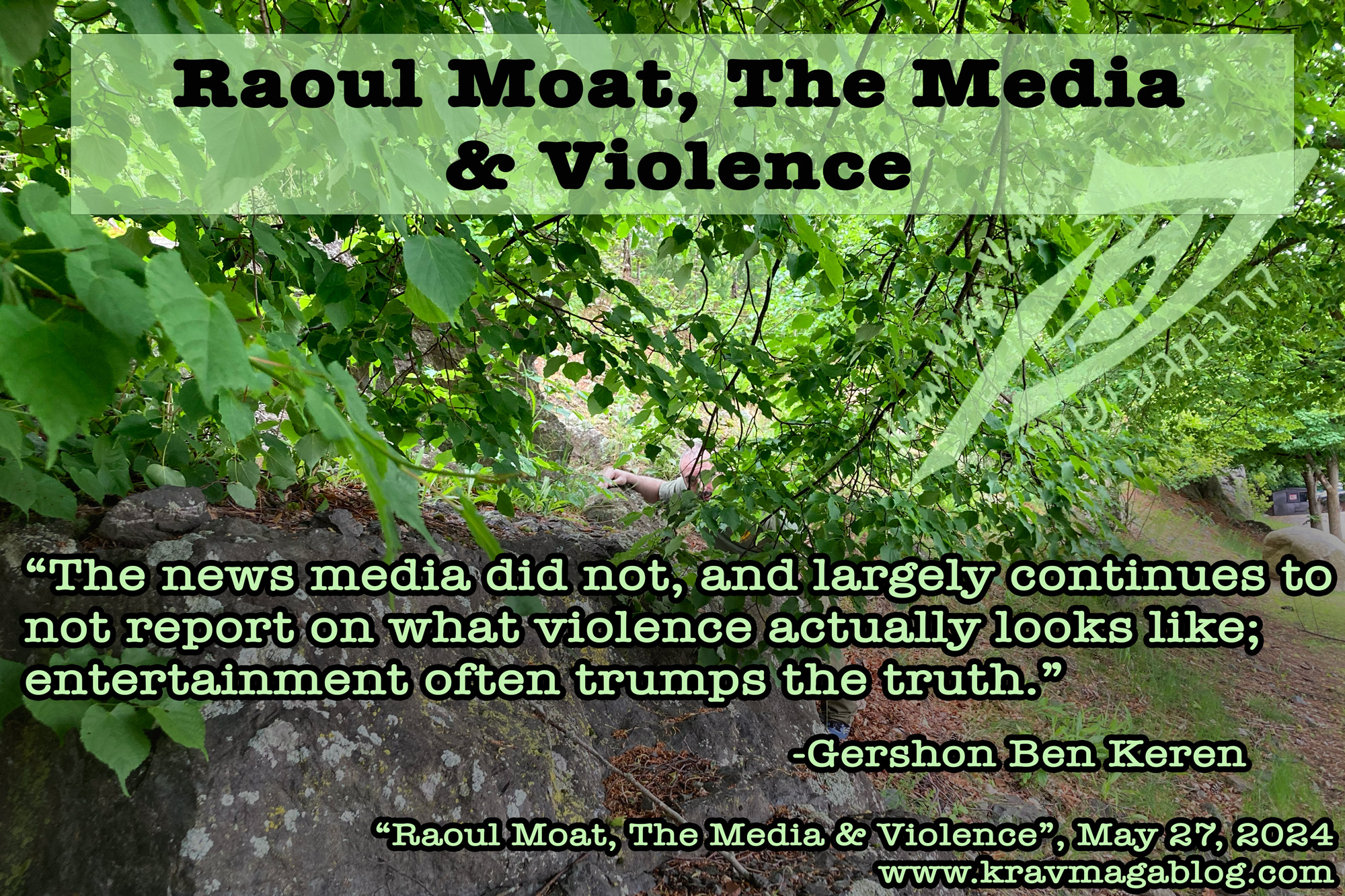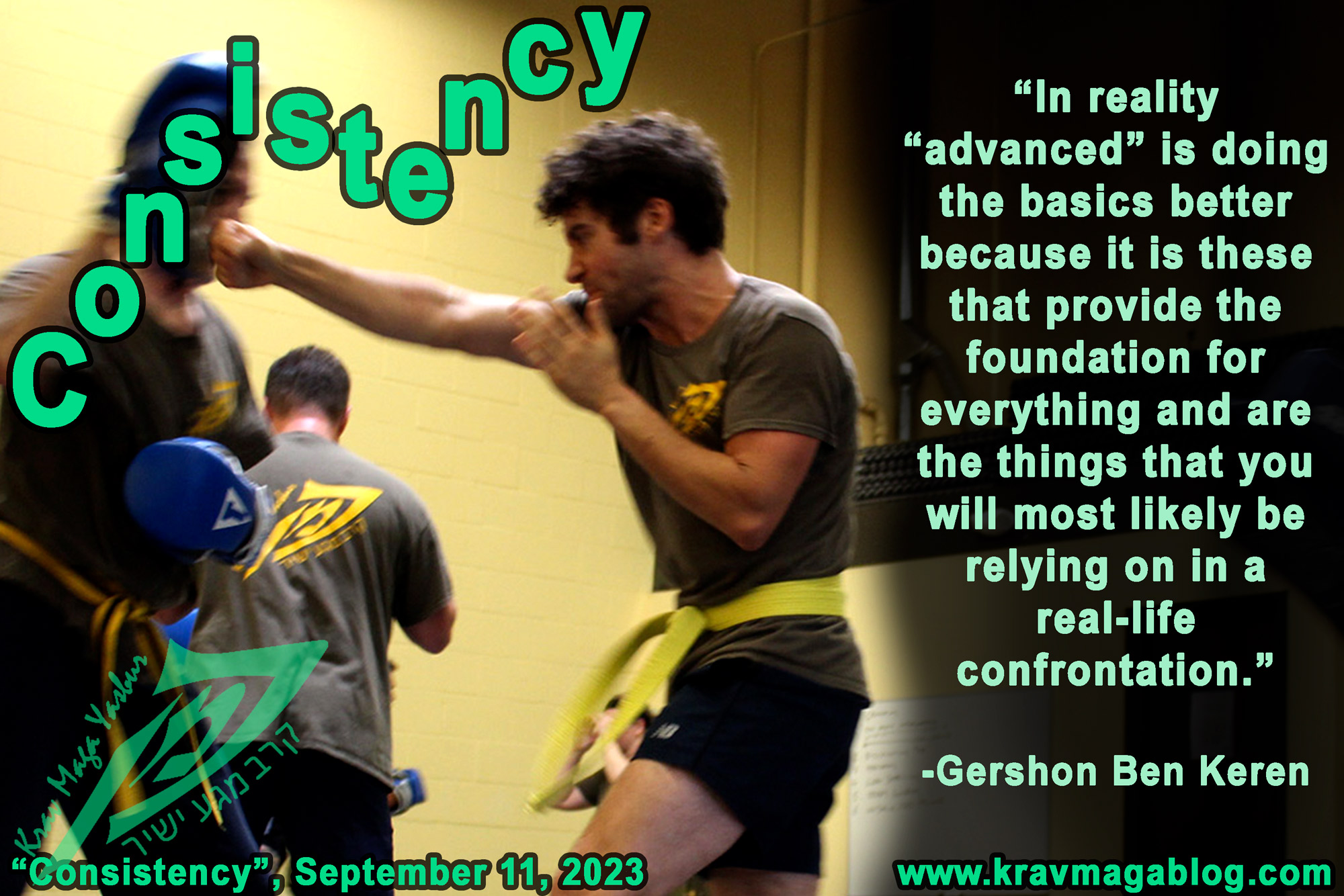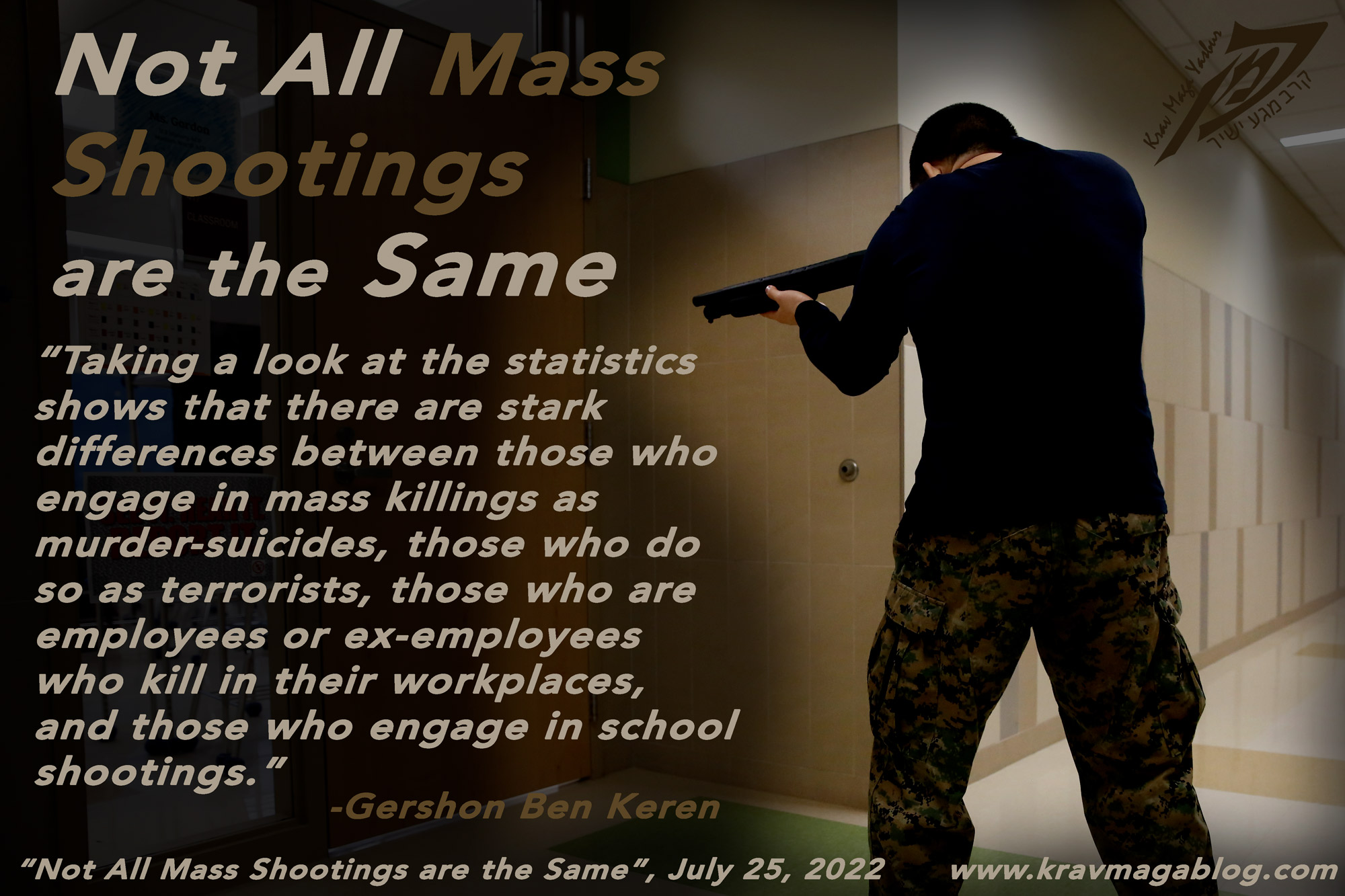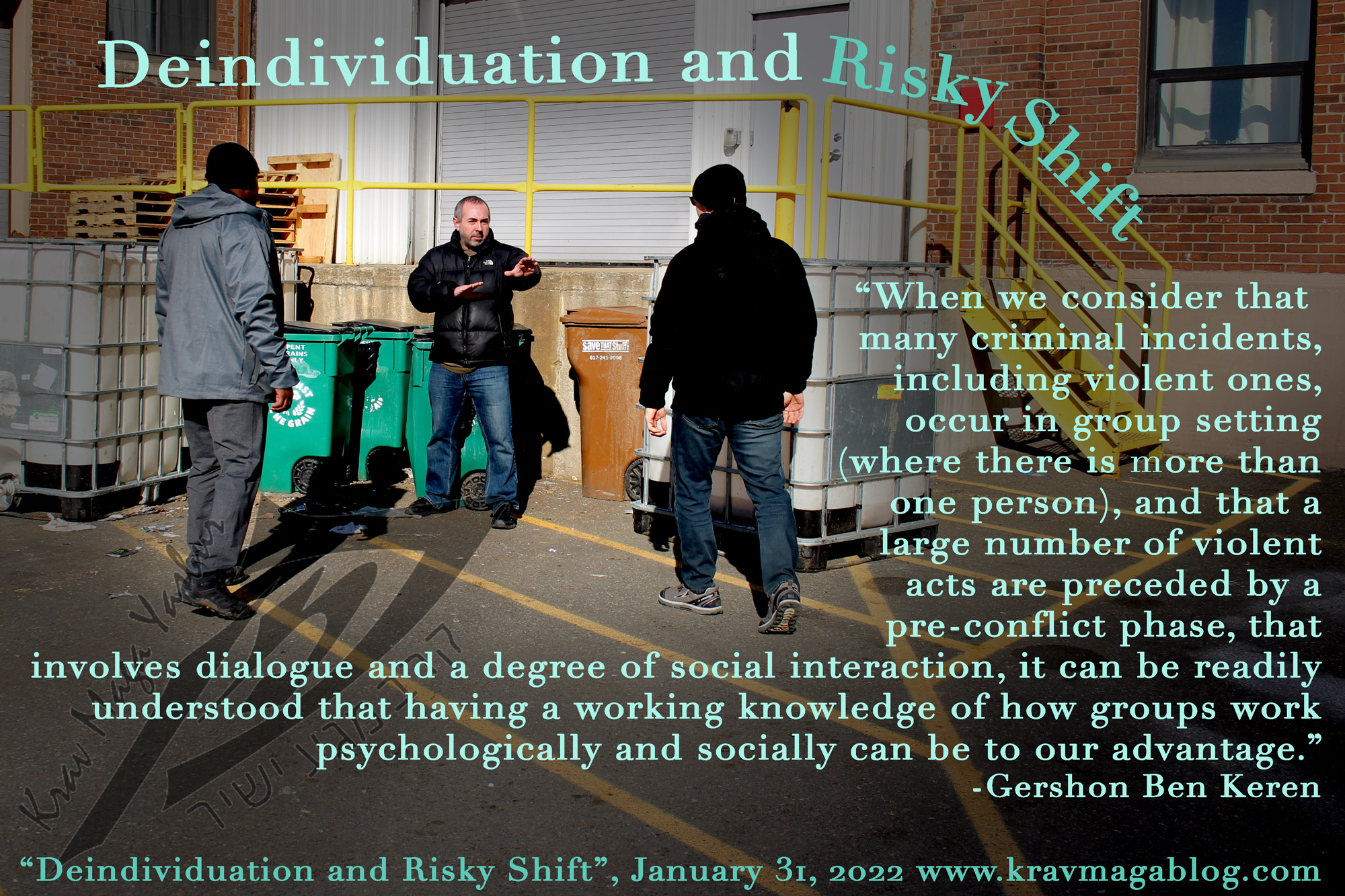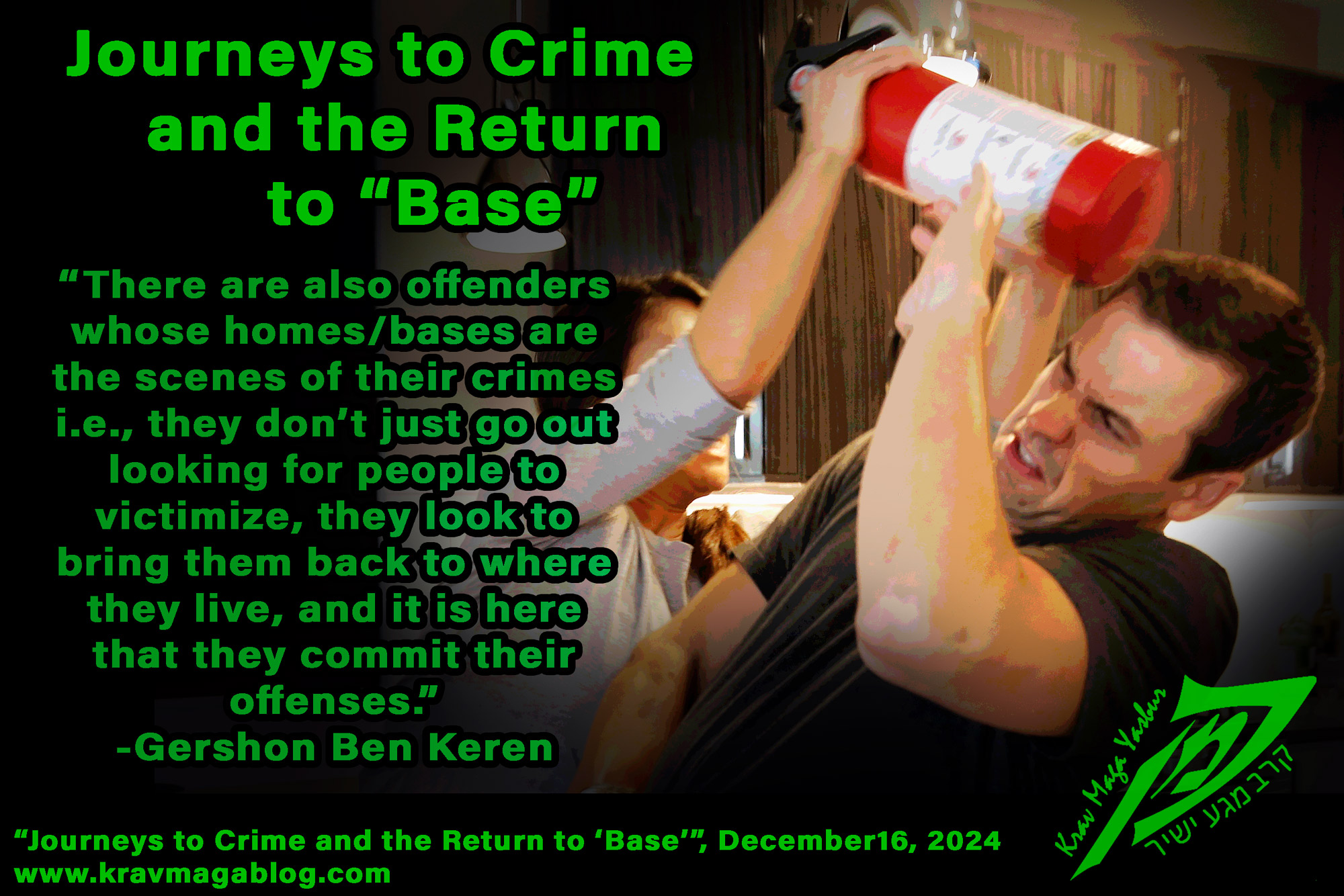Deindividuation and Risky Shift, is an article written by Gershon Ben Keren, a 5th Degree Black Belt in Krav Maga, who teaches Krav Maga in Boston, MA. He has also authored three Amazon best-Selling Books on Krav Maga.
When we consider that many criminal incidents, including violent ones, occur in group settings (where there is more than one person), and that a large number of violent acts are preceded by a pre-conflict phase, that involves dialogue and a degree of social interaction, it can be readily understood that having a working knowledge of how groups work psychologically and socially can be to our advantage. In social psychology there are basically two opposing views to how groups work/interact: one states that there is no collective influence of the group on individual members, whilst the other suggests that individuals maintain their identity within a group and are not influenced by being part of it. This latter view was more preeminent in the early part of the twentieth century, and has largely been undone by research starting in the 1950’s which demonstrated that people are influenced when they are part of, and start to identify as part of a group etc. In this first article I want to take a brief look at two different psychological phenomena that occur when an individual is part of a group, these are: Deindividuation (Zimbardo, 1973), and Risky Shift (Stoner, 1961). In the next article I want to examine Groupthink (Janis, 1972) and Conformity (Asch, 1951). Before looking at these theories it is first worth noting some of the different characteristics and components that make up groups.
Even in a group of two offenders (regardless of the nature of the offense), there are roles, and these are necessary, for the group to attain its goals – such as in the case of a street robbery e.g., one party is likely to make the demand and do most of the speaking i.e., it would be confusing and slow down the transaction if the person being victimized had to communicate separately to both parties; one may add their voice such as instructing the target to “hurry up” etc., in order to reinforce the idea that the subject being robbed is outnumbered but their role is to reinforce the demand etc. Even in such a pairing there will be one person who assumes the leadership role. The group will also have “norms”, such as the agreed level of violence that should be used; this may be tacit/implied or explicit/instructed. Over time in stable groups, such as a pair of muggers who work together on many robberies, norms will be developed and subconsciously understood and communicated e.g., both parties will “instinctually” understand when violence is required, and at what level it should be meted out. This requires group members to be able to communicate to each other either directly or indirectly (such as through body language etc.). Different groups also have different levels of cohesiveness i.e., how closely the members of the group are bound together. The greater the level of cohesiveness the greater the influence the group has over its members e.g., a perceived slight to one member may be seen as a slight against all the members etc.
The first group theory I want to look at is Zimbardo’s idea of Deindividuation. Most people have heard of the Stanford Prison Experiment (1971), where a group of college students were randomly divided into guards and prisoners and observed in a “prison” setting. From a scientific perspective the experiment was extremely flawed in that it could be perceived that Zimbardo overly “coached” the guards and their actions and behaviors subconsciously started to conform to the outcomes he was expecting i.e., he indirectly influenced the outcome of the experiment. However, his idea that good people will behave badly given the “right” setting, offers some explanation as to why US Military Personnel engaged in extreme acts of abuse at the Abu Ghraib prison in Iraq. Zimbardo – reluctantly - had to end his experiment after six days due to the cruelty of the “prison guards”, which involved similar acts of sexual humiliation that those in Abu Ghraib experienced; something that may suggest that this is one of the most extreme forms of humiliation that the human psyche can conjure up. Zimbardo believed/concluded that the reason the “prison guards” behaved so badly towards the “prisoners”, who were college students just like themselves, was due to something he referred to as Deindividuation – a term originally coined by Leon Festinger. A process that occurs when the individual believes that the group they belong to gives them a degree of anonymity, and that their actions and behaviors reflect the norms of the group e.g., if everybody is doing it then it is acceptable – if everybody during a riot is destroying property and looting, then this is what is expected, and in such a large group there is a degree of anonymity. Anecdotally I have witnessed on several occasions, members of a crowd kicking a pair who are fighting on the ground, because others are doing so, and they clearly don’t believe they will be identified.
Risky Shift posits that a group is more likely to engage in extreme ways than the individuals would on their own, because each individual believes that other group members are more likely to want to behave in extreme ways than they would, and in order to remain part of the group they must adjust their viewpoint etc. This motivates the group to engage in much more risky activities. Risky shift can be seen as a form of overcompensation by an individual to meet what they see are the perceived requirements of being part of a group. If we try to understand Capitol rioter Danny Rodriguez’s actions on January 6th 2021, where he tasered a police officer (Mike Fanone), risky shift can help explain why he did what he did. In his interview with the FBI, he broke down whimpering, sobbing, and seemingly regretting what he did. When asked as to why he tased the officer, Rodriguez breaks down and says, “I don’t know”. It is likely in the moment when he did so, Rodriguez thought that other members of the group expected him to behave in this way, and in order to conform to the group’s expectations, he did what he did. This in no way reduces or takes away his individual responsibility for his actions but it does help explain why he would engage in a much riskier behavior as part of a group than he would on his own.
When we try to understand why people do what they do, one theory on its own is usually unable to explain all of the reasons, and it normally takes a number of theories combined to give a fuller explanation e.g., Risky Shift may in part explain why Rodriguez tased Fanone, but he may have also done so in part because he felt anonymous at that moment etc. In next week’s article, I will look at how Conformity and Groupthink influence individual behaviors when part of a group.
0 COMMENTS
